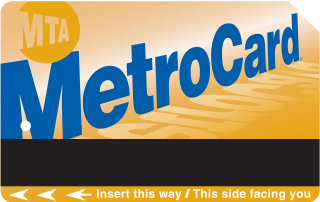
The MetroCard is a magnetic stripe card used for fare payment on transportation in the New York City area. It is a payment method for the New York City Subway, New York City Transit buses and MTA buses. The MetroCard is also accepted by several partner agencies: Nassau Inter-County Express (NICE), the PATH train system, the Roosevelt Island Tramway, AirTrain JFK, and Westchester County's Bee-Line Bus System.
Suica is a prepaid rechargeable contactless smart card and electronic money system used as a fare card on train lines and other public transport systems in Japan, launched on November 18, 2001, by JR East. The card can be used across the nation as part of Japan's Nationwide Mutual Usage Service. The card is also widely used as electronic money for purchases at stores and kiosks, especially at convenience stores and within train stations. In 2018, JR East reported that Suica was used for 6.6 million daily transactions. As of October 2023, 95.64 million Suica have been issued, and 1.63 million stores accept payment via Suica's digital currency.

The Chicago Transit Authority (CTA) is the operator of mass transit in Chicago, Illinois, United States, and some of its suburbs, including the trains of the Chicago "L" and CTA bus service. In 2023, the system had a ridership of 279,146,200, or about 993,700 per weekday as of the third quarter of 2024.

Metra is the primary commuter rail system in the Chicago metropolitan area serving the city of Chicago and its surrounding suburbs via the Union Pacific Railroad, BNSF Railway, and other railroads. The system operates 243 stations on 11 rail lines. It is the fourth busiest commuter rail system in the United States by ridership and the largest and busiest commuter rail system outside the New York City metropolitan area. In 2023, the system had a ridership of 31,894,900, or about 168,600 per weekday as of the third quarter of 2024. The estimated busiest day for Metra ridership occurred on November 4, 2016—the day of the Chicago Cubs 2016 World Series victory rally, with a record 460,000+ passengers.

SmarTrip is a contactless stored-value smart card payment system managed by the Washington Metropolitan Area Transit Authority (WMATA). The Maryland Transit Administration (MTA) uses a compatible payment system called CharmCard. A reciprocity agreement between the MTA and WMATA allows either card to be used for travel on any of the participating transit systems in the Baltimore-Washington metropolitan area. Unlike traditional paper farecards or bus passes, SmarTrip/CharmCard is designed to be permanent and reloadable; the term "SmarTrip" may refer to both payment systems unless otherwise noted.
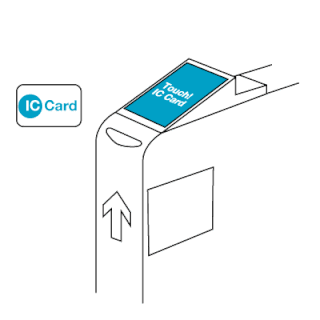
The EZ-Link card is a rechargeable contactless smart card and electronic money system that is primarily used as a payment method for public transport such as bus and rail lines in Singapore. A standard EZ-Link card is a credit-card-sized stored-value contact-less smart-card that comes in a variety of colours, as well as limited edition designs. It is sold by SimplyGo Pte Ltd, a merged entity of TransitLink and EZ-Link since 2024, a subsidiary of the Land Transport Authority (LTA), and can be used on travel modes across Singapore, including the Mass Rapid Transit (MRT), the Light Rail Transit (LRT), public buses which are operated by SBS Transit, SMRT Buses, Tower Transit Singapore and Go-Ahead Singapore, as well as the Sentosa Express.

Pace is the suburban bus and regional paratransit division of the Regional Transportation Authority serving the Chicago metropolitan area. It was created in 1983 by the RTA Act, which established the formula that provides funding to the CTA, Metra, and Pace. The various agencies providing bus service in the Chicago suburbs were merged under the Suburban Bus Division, which rebranded as Pace in 1984. In 2022, Pace had 18.041 million riders.

The Clipper card is a reloadable contactless smart card used for automated fare collection in the San Francisco Bay Area. First introduced as TransLink in 2002 by the Metropolitan Transportation Commission (MTC) as a pilot program, it was rebranded in its current form on June 16, 2010. Like other transit smart cards such as the Oyster card, the Clipper card is a credit card-sized stored-value card capable of holding both cash value and transit passes for the participating transit agencies. In addition to the traditional plastic card, Clipper is available as a virtual card in Google Wallet and Apple Wallet. Clipper is accepted by nearly all public transit services in the Bay Area, including but not limited to Muni, BART, Caltrain, AC Transit, SamTrans, Golden Gate Transit, Golden Gate Ferry, San Francisco Bay Ferry, and VTA.

The Presto card is a contactless smart card automated fare collection system used on participating public transit systems in the province of Ontario, Canada, specifically in Greater Toronto, Hamilton, and Ottawa. Presto card readers were implemented on a trial basis from 25 June 2007 to 30 September 2008. Full implementation began in November 2009 and it was rolled out across rapid transit stations, railway stations, bus stops and terminals, and transit vehicles on eleven different transit systems.
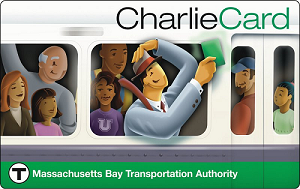
The CharlieCard is a contactless smart card used for fare payment for transportation in the Boston area. It is the primary payment method for the Massachusetts Bay Transportation Authority (MBTA) and several regional public transport systems in the U.S. state of Massachusetts. It is used on the MBTA's subway and bus services, but is not currently accepted on the MBTA Commuter Rail and ferries.
The Chicago Card and the Chicago Card Plus were contactless smart cards used by riders of the Chicago Transit Authority (CTA) and Pace to electronically pay for bus and train fares in the city of Chicago, Illinois, USA and the surrounding suburbs. On June 1, 2014, CTA and Pace stopped accepting these cards as part of a transition to Ventra.

Morse is an 'L' station on the CTA's Red Line. It is located at 1358 West Morse Avenue in the Rogers Park neighborhood of Chicago, Illinois. The station was formerly known as Rogers Park or Morse-Rogers Park. There is an entrance/exit on West Morse Avenue, featuring multiple turnstiles, an ATM, and fare machines. There is also an unattended entrance/exit with a single turnstile on Lunt Avenue. Purple Line weekday rush hour express service use the outside tracks but do not stop at this station.

O'Hare is a Chicago "L" station located at O'Hare International Airport, 17 miles (27 km) northwest of The Loop. The northwestern terminus of the Chicago Transit Authority's Blue Line, it is a subway station with two island platforms serving three tracks, situated under the parking garage for Terminals 1, 2, and 3. Trains are scheduled to depart from O'Hare every 2–7 minutes during rush-hour periods and take about 40 minutes to travel to the Loop. It is the westernmost station of the Chicago 'L' system. It is also the only station without coordinates in Chicago's grid system, the only underground terminus, and is the only terminal that does not directly connect to any CTA or Pace buses. Uniquely among "L" stations, it serves airport passengers and employees exclusively, and is not accessible by foot beyond airport terminals 1, 2, and 3. It is also one of three terminals that does not have a yard assigned to it.

The Jefferson Park Transit Center is an intermodal passenger transport hub in the Jefferson Park neighborhood of Chicago, Illinois. It serves as a station for rail and also as a bus terminal. Jefferson Park Transit Center's railroad station is on Metra's Union Pacific Northwest Line, with the station located at 4963 North Milwaukee Avenue. Jefferson Park is 9.1 miles (14.6 km) away from Ogilvie Transportation Center in downtown Chicago, the inbound terminus of the Union Pacific Northwest Line. Under Metra's zone-based fare system, Jefferson Park is in zone 2. As of 2018, Jefferson Park is the 97th busiest of Metra's 236 non-downtown stations, with an average of 510 weekday boardings.

A transit pass or travel card, often referred to as a bus pass or train pass etc., is a ticket that allows a passenger of the service to take either a certain number of pre-purchased trips or unlimited trips within a fixed period of time.

The Transit Access Pass (TAP) is a contactless smart card used for automated fare collection on most public transport agencies within Los Angeles County, California. The card is also available in electronic form, free of charge, in Apple Wallet, thereby bypassing the need to purchase the plastic USD $2 card. It is administered by the Los Angeles County Metropolitan Transportation Authority (Metro), and the card and fare collection systems are manufactured by Cubic Transportation Systems.
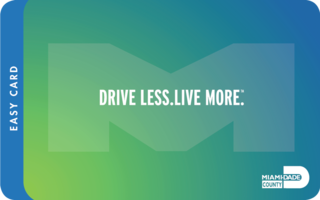
The Easy Card is a contactless smartcard system for public transit fares in the Miami metropolitan area. The Easy Card is valid on Metrobus and Metrorail services in Miami-Dade County, and on Tri-Rail services throughout the region. Easy Card payments were introduced in 2009 on Miami-Dade Transit services, and expanded to Tri-Rail in 2011. The card functions as a stored-value card, and can also be loaded with unlimited-ride passes. Reduced-fare and zero-fare versions of the Easy Card are available for eligible customers, including seniors and individuals with disabilities.
Cubic Corporation is an American multinational defense and public transportation equipment manufacturer. It operates two business segments: Cubic Transportation Systems (CTS) and Cubic Mission and Performance Solutions (CMPS).
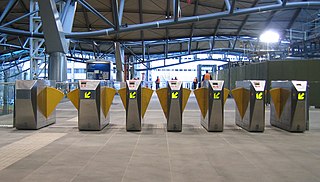
An automated fare collection (AFC) system is the collection of components that automate the ticketing system of a public transportation network – an automated version of manual fare collection. An AFC system is usually the basis for integrated ticketing.
OMNY is a contactless fare payment system, currently being implemented for use on public transit in the New York metropolitan area. OMNY can currently be used to pay fares at all New York City Subway and Staten Island Railway stations, on all MTA buses, AirTrain JFK, Metro North's Hudson Rail Link, and on the Roosevelt Island Tram; when completely rolled out, it will also replace the MetroCard on Bee-Line buses, and NICE buses. OMNY will also expand beyond the current scope of the MetroCard to include the Long Island Rail Road and Metro-North Railroad.


















